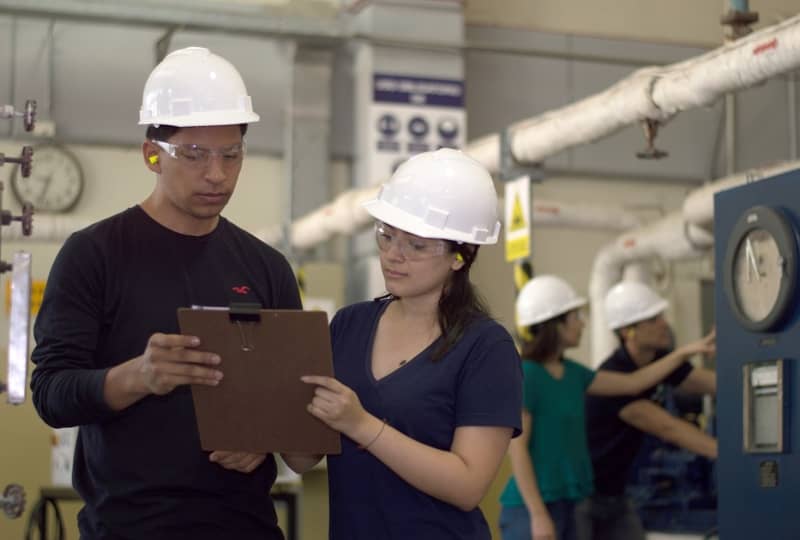If there’s one thing all manufacturing companies hate, it’s injuries and hazards. Despite trying its best to maintain a good standard of safety, there are some practices we tend to forget, and slight inconsistencies can often lead to disastrous results. As such, checking workplace safety and improving quality is necessary to achieve a zero injury record for your company in the long run.
Following safety regulations and getting means to improve them further is a constant priority. So in this article, we will cover a comprehensive guide on the best employment practices for equipment and other suggestions for maximizing safety in your manufacturing business regardless of state laws and location.
1. Understanding Workplace Safety
Everyone knows that safety is vital to any workplace. Still, not everyone understands why other companies significantly invest in anti slip stair nosing and handlebars, quality uniforms, and numerous machinery and accessories to reduce risk.
Since the industrial age, the manufacturing sector has had record-high counts of workplace-related accidents, hazards, injuries and deaths that often cost millions in repair and legal damages. That’s why when workplace safety is discussed, manufacturing workers take it to a much higher level of care and attention than other businesses.
2. Best Safety Practices For Employees
In a manufacturing company, each crevice, wall and everything around it is a potential hazard, waiting for inevitable missteps and miscalculations to wreak havoc instantly. Fortunately, we can reduce and even eliminate any possibility of an accident by relying on the best workplace safety practices that you can train your employees.
Below is one of the best practices performed by the top manufacturing companies in the world. And incorporating them into your end increases the quality of workplace safety by a wide margin.
3. Proper Use of Machines, Tools and Company Equipment
One of the common causes of workplace-related injuries is the misuse of company equipment and tools. While they are made to be as simple as possible, their intricate parts and moving gears can harm an unaware employee.
Before using or letting your employees operate, always have a detail-oriented training and safety inspection course to properly train and expose employees to company equipment and tools to make employees as efficient and careful as possible when they’re ready for operations.
4. Communicate With Managers For Any Defects
Communication is the key to many things, including safety. Part of working in a manufacturing company is seeing any defects or occurrences out of the regular day-to-day work, something that feels out of place. Often, those may be defects that need to be addressed.
If you see something that could cause damage or injury, always contact your line manager or the nearest authority to report the defect. And since supervisors are legally contracted to keep the workplace as clean and safe as possible, they must take action and work on that to verify such reports and perform the appropriate action as needed.
Even a single unattended puddle of water in the workplace can be a hazard, highlighting the importance of communicating anything out of the blue.
5. Be Careful of Slips and Obstacles
A common cause of non-fatal workplace injuries are slips and unintended barriers that hinder transport or trips. All pathways must be clear of hazards to prevent such injuries further.
As mentioned earlier, always communicate with managers or make cleaning requests from the maintenance department to remove hazards, check for drips or holes that may cause the puddles and remove any form of barriers that restrict entryways, especially if Part of an employee’s routine is to transport fragile and hazardous materials from one place to another.
6. Proper Safety Uniforms And PPE
Proper safety equipment and gear are also a must for all employees. When dealing with potentially dangerous materials, specialized apparel is needed to shield one’s body from corrosion, chemicals and, in some cases, lingering gasses.
Always remind your employees to wear and check the gear’s equipment and uniforms. Keeping them maintained and up to date with regulation standards minimizes injuries from malfunctions and gets maximum protection from hazardous risks like chemical spills and other existing hazards in a manufacturing workplace.
7. Keeping Entryways Clear and Emergency Exits Visible
This is in conjunction with clearing up hazards like spills and barriers. In a manufacturing business, you get to travel inefficient pathways to maximize productivity.
Monitor and ensure that your team does regular routines to keep entryways clear of barriers and exits visible and not obstructed by any object. To add to the effectiveness, you can add signages, visible paint, especially for exits and color-coded arrow-shaped pathways to help keep operations efficient and easy to locate and check.
8. Emergency Response/ Medical Equipment
One way to maximize safety is avoiding hazards and addressing them once someone gets hurt or injured. When someone is injured, the most standard course of action is to contact an ambulance as quickly as possible. Additionally, it helps you comply with regulations and have the proper set of emergency items to keep hazards at a minimum, contain the accident and avoid causing further damage.
Having the right emergency equipment and more is truly a breath of fresh air for employees, and if ever an accident occurs, we immediately get the best tools for the job.
9. Industrial Standard Signages
Visual cues are essential; knowing where one is automatic offers efficiency and productivity, identifying hazardous sports or closing off certain rooms.
There are a lot of signages available in the market, such as neon arrows, caution tapes, cones, and custom signages to contain areas of danger and keep your employees away from unsafe spaces unless addressed. A good tip is when posting warnings, pathway signage, and other visual cues; focus on brighter and clearer logos and color schemes and make it as simple as possible.
Overall, these small, routine-like practices are critical for the overall safety of the workplace. In the manufacturing business, anything unintended can be a hazard for anyone at any time. As such, we further added some recommendations to make your business more productive while maximizing safety.
10. Wash Bays
Often located near parking lots or receiving hubs, washing bays can be seen as disinfection rooms but for trucks and vehicles. If your business requires a great deal of care and regulations on removing any chance of cross-contamination, then wash bays are perfect for cleaning vehicles and machines after delivery to clean out dirt and exposure from certain materials caught by traveling down the road.
11. Quality Control/ Lab Department
You need a separate room if you need to do research, as most manufacturers do in their products. Quality or lab departments offer a clean and safe space for scientists and experts to create or test products in a hazard-free but controlled environment.
These are good additions to your manufacturing business as you can quickly progress through new products and testing requirements, especially if testing through certain products has the potential to create danger and employee injuries over time.
12. Disposal Rooms
Disposal rooms may be one of the must-have rooms every manufacturing building should have. It is essential to know that every building produces waste, whether in manufacturing or not.
And in this context, companies expel a lot of waste from producing their products. Due to this a lot of waste get accumulate, which leads to the necessity of disposal rooms. Instead of working with public garbage trucks and collecting waste through trash bags, have a dedicated disposal room wherein your employees can quickly dispose of waste on their own and even use recycling machines to turn waste into another form that can be reused, saving on costs while minimizing hazards.
13. Receiving/Holding Hubs
While wash bays receive vehicles to wash them down until clean, receiving hubs are often separate platforms or rooms for taking materials and raw materials. If you’re handling fragile or dangerous materials, these receiving hubs offer a safe space for experts to open and carry raw resources over to production safely.
If you’re dealing with dangerous chemicals and hazards, receiving hubs are often a must-have room, along with docks, warehouse entrances, and other hubs.
14. Maintenance Rooms
You see it everywhere in supermarkets and other buildings. Maintenance rooms are a critical part of every manufacturing building as they store all cleaning, disposal, and other items that could help you reduce waste and hazards. Such items must be kept in rooms away from operations, and maintenance rooms are often the case.
Final Thoughts
What’s a high-tech manufacturing company with the most expensive equipment without proper safety precautions? In every manufacturing business, there is always a concern for ongoing opportunities for hazards, explosions, and leakages, and even the most significant manufacturing companies invest money and time to remove any chance of hazards and accidents for the benefit of their employees and stakeholders. The tips mentioned above offer you some level of safety for employers as far as daily operations would go in manufacturing. Additionally, by thorough research and willingness to invest in safety, you will create a space where safety is maximized, and employees are motivated to perform their work and thorough safety practices for a safer, more optimized business.






0 Comments